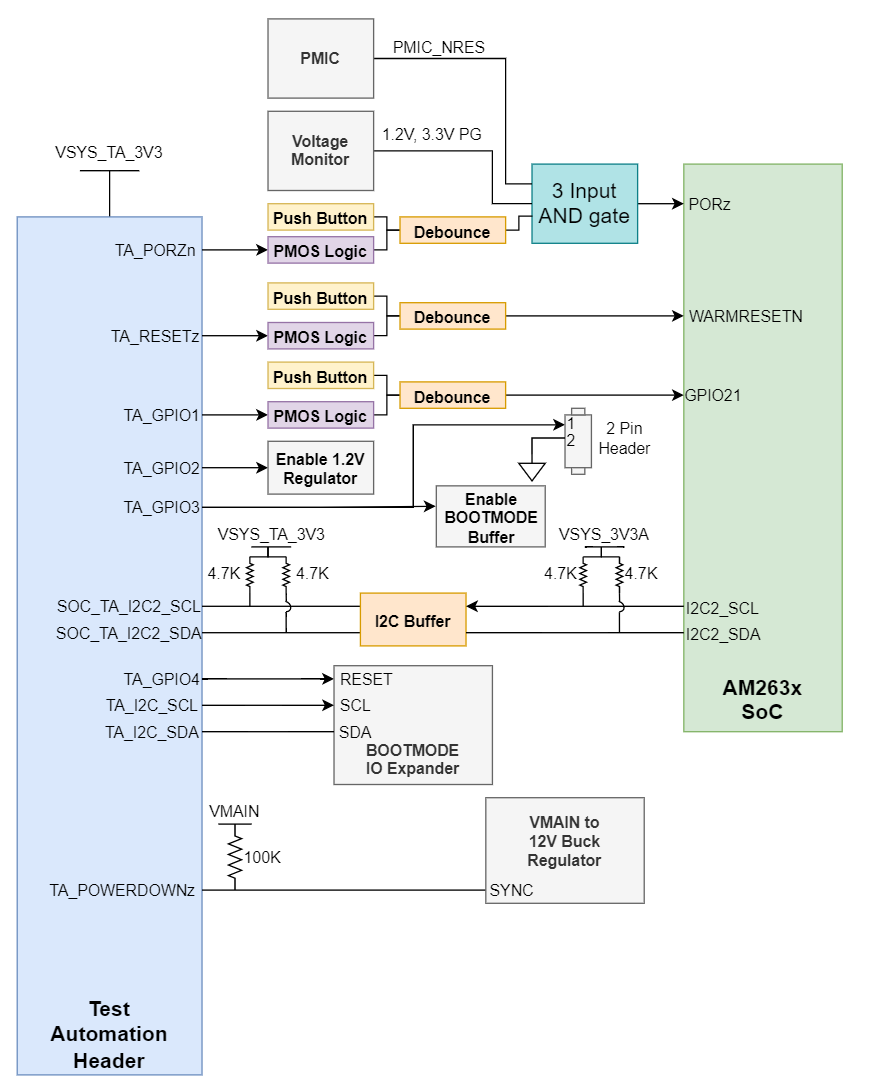SPRUJ93 august 2023
- 1
- Description
- Features
- 4
- 1Evaluation Module Overview
-
2Hardware
- 2.1 Functional Block Diagram
- 2.2 Component Identification
- 2.3 Power Requirements
- 2.4 Reset
- 2.5 Clock
- 2.6 Boot Mode Selection
- 2.7 JTAG Path Selection
- 2.8 Header Information
- 2.9 GPIO Mapping
- 2.10 Push Buttons
- 2.11 Test Points
- 2.12 Interfaces
- 2.13 HSEC Pinout and Pinmux Mapping
- 3Software
- 4Hardware Design Files
- 5Additional Information
- 6References
2.12.10 Test Automation Header
The AM263x Control Card supports a 40-pin test automation header that allows an external controller to manipulate basic operations such as power down, PORz, warm reset, and bootmode control.
 Figure 2-32 Test Automation Header
Figure 2-32 Test Automation HeaderThe Test Automation Circuit is powered by a dedicated 3.3 V power supply (VSYS_TA_3V3) that is generated by a 5 V to 3.3 V buck regulator (TPS62177DQCR).
The AM263x SoC I2C2 instance is connected to both the Test Automation Header and the bootmode IO expander (TCA6408ARGTR).
Test Automation Header GPIO Mapping details the Test Automation GPIO mapping:
Table 2-24 Test Automation Header GPIO
Mapping
| Signal Name | Description | Direction |
|---|---|---|
| TA_POWERDOWN | When logic low, disables the 3.3 V buck regulator (TPS62913RPUR) that is used in the first stage of DC/DC conversion | Output |
| TA_PORZn | When logic low, connects the PORz signal to ground due to the PMOS V_GS being less than zero creating a power on reset to the MAIN domain | Output |
| TA_RESETz | When logic low, connects the WARMRESETn signal to ground due to the PMOS V_GS being less than zero creating a warm reset to the MAIN domain | Output |
| TA_GPIO1 | When logic low, connects the INTn signal to ground due to the PMOS V_GS being less than zero creating an interrupt to the SoC | Output |
| TA_GPIO2 | When logic low, disables the 1.2 V buck regulator (TPS62913RPUR) | Output |
| TA_GPIO3 | When logic low, disables the bootmode buffer output enable | Output |
| TA_GPIO4 | Reset signal for Bootmode IO Expander (TCA6408ARGTR) | Output |